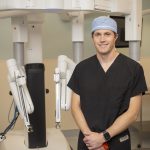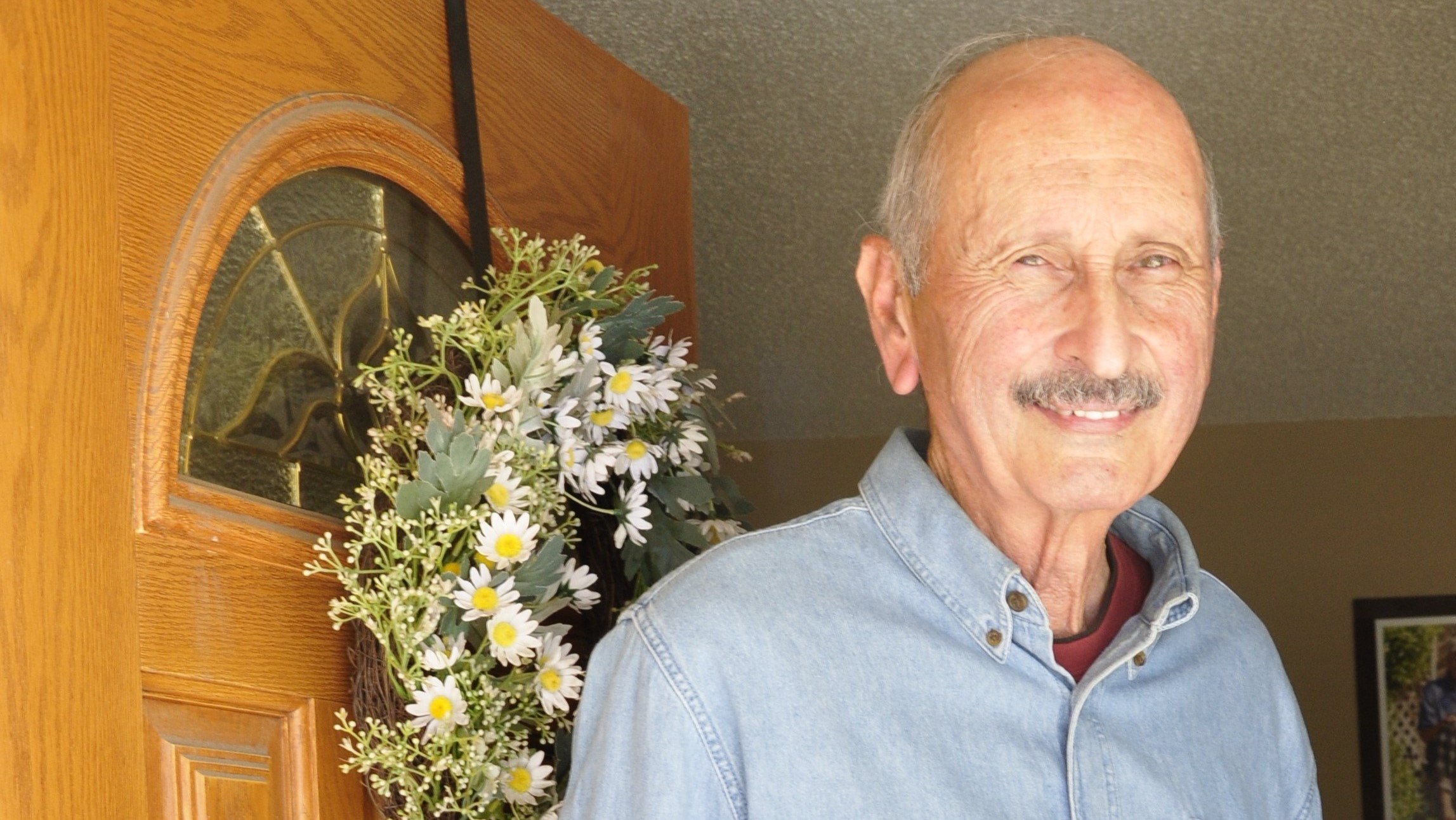Steven Mendoza, a veteran postal worker, crossed countless Santa Barbara neighborhoods every day for more than 30 years.
Now retired, the 77-year-old grandfather was not about to let prostate cancer slow him down. He understood the importance of screening and early detection, so he diligently received his annual PSA test at the request of his Sutter oncologic urologist Dr. Scott Tobis.
A PSA test is recommended for men age 50 and over. It measures the level of prostate-specific antigen, a protein produced by the prostate, in the blood. Higher-than-normal levels may be a sign of prostate cancer. Since most prostate cancers do not cause symptoms until very late in the course of the disease, early detection is critical. Physicians may recommend additional tests, imaging or a biopsy depending on the PSA result.
Not all prostate cancers require immediate treatment, and active surveillance is a good option with many men with less aggressive cancers. Dr. Tobis told Mendoza that he could opt for continued monitoring initially after discovering early-stage disease. However, in October 2024 while on active surveillance together they discovered the disease was becoming more aggressive and would require definitive action. “I wanted to wait until after the holidays and I was hoping to come home at the end of the day after the procedure was over,” he explains.
In early 2025 when Sutter’s Foothill Surgery Center became one of the first outpatient centers in the country to install a da Vinci 5® robotic surgery system, Dr. Tobis made a phone call to his patient.

Dr. Scott Tobis with the da Vinci 5® robotic surgical system at Foothill Surgery Center
“Dr. Tobis said they could remove my prostate at the outpatient center, and I could go home the same day. He asked if I would be interested. I said, absolutely!” Mendoza shares.
In March of this year, he became one of the first patients in the country to have a prostatectomy using a da Vinci 5® at an outpatient center.
Mendoza arrived early in the morning and quickly got ready. During the 2.5-hour procedure, Dr. Tobis removed the prostate with the new robotic system and spared critical nearby structures so Mendoza could return to normal function quickly. After recovering from the anesthesia, Mendoza was able to return home in the early afternoon.
Traditional vs. Robotic Surgery
In a traditional prostatectomy, the surgeon uses his own vision and standard instruments to make a large incision. This method often means a multiple night stay in the hospital, more post-operation pain, blood loss, greater infection risk, longer recovery, and a higher chance of complications.
With the da Vinci 5®, the surgeon uses a 3D camera to make an incision the size of a keyhole. “This system is extremely responsive, precise and has 3D high-definition vision so you can see better and preserve more tissue, sparing nerves which are vital to normal function,” says Dr. Tobis. “Patients feel less pain, have less scarring, a faster recovery, and are more likely to preserve urinary and sexual function.”
That was the case with Mendoza who was pleased to be home by the dinner hour on the day of his prostatectomy. “It was a piece of cake,” he describes.
Read more about robotic surgery at Sutter Health
Continence and sexual potency are the two most common post-surgical concerns shared by patients undergoing prostatectomy. Mendoza was grateful for the negative cancer margins, but he also appreciated these two functions remained intact, and that side effects from the procedure were minimal. He followed the doctor’s orders to rest and had minimal discomfort. Within a week, he was well on his way to a full recovery.
Prevention and Treatment of Prostate Cancer
Prostate cancer is the most commonly diagnosed cancer in American men, excluding skin cancer. About one in eight men will be diagnosed with prostate cancer during their lifetime. The risk increases significantly after age 50, which is why Dr. Tobis recommends an annual prostate exam as well as a PSA test.
Treatment of prostate cancer depends on the stage of the cancer and how aggressive it is, the PSA level and the age and health of the patient. Sometimes active surveillance is used for low-risk, slow-growing prostate cancer. Treatment options for more aggressive but still localized prostate cancer include surgery, radiation therapy and focal therapies like High Intensity Focused Ultrasound. Localized forms of prostate cancer have a nearly 100% five-year survival rate with appropriate treatment.
Growing Older, Worry-Free
Instead of tending to his mail route, Mendoza now spends a lot of time with his wife, adult children and his grandchildren. His special hideaway is in his own yard, where he tends to his garden succulents and adds to his Spanish Talavera pot collection.

Mendoza with one of his prized Talavera pots
“I chose Dr. Tobis for his experience in robotic surgery, and I am happy to have this behind me now,” adds Mendoza.
For more information on Sutter Health’s prostate cancer specialists, click here.





